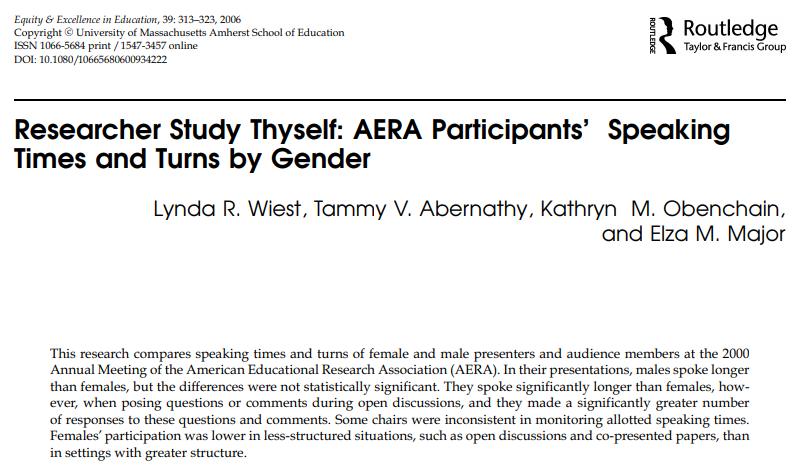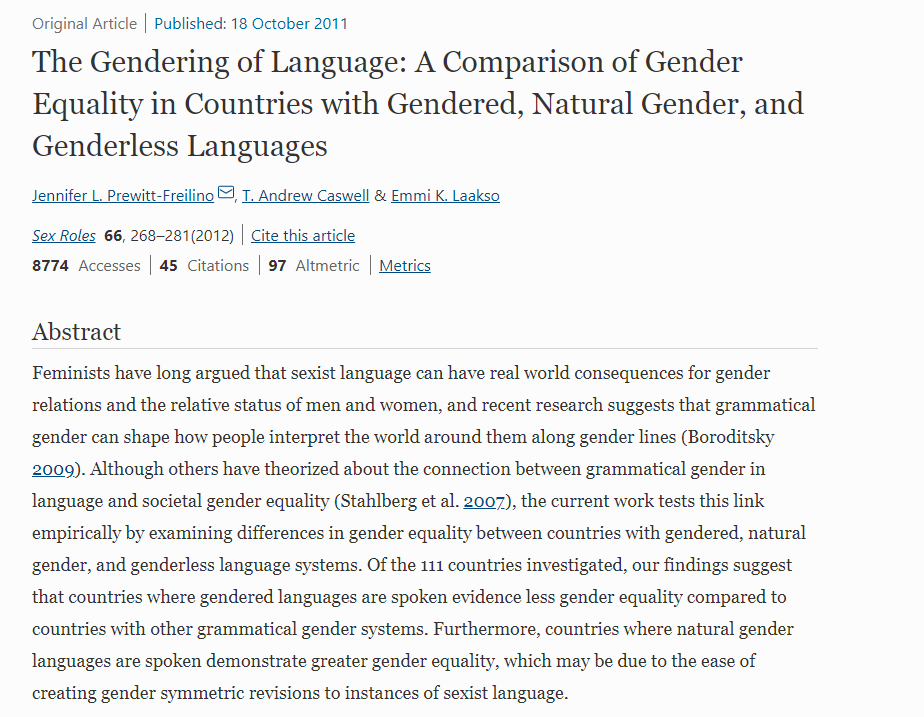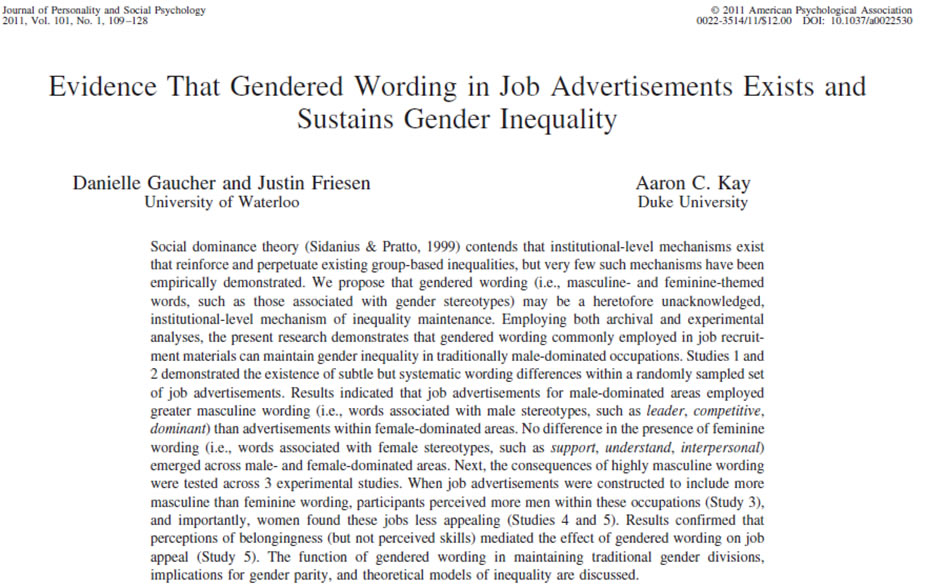
Wiest, L. R., Abernathy, T. V., Obenchain, K. M., & Major, E. M. (2006). Researcher study thyself: AERA participants' speaking times and turns by gender. Equity & Excellence in Education, 39(4), 313-323. https://doi.org/10.1080/10665680600934222

Wiest, L. R., Abernathy, T. V., Obenchain, K. M., & Major, E. M. (2006). Researcher study thyself: AERA participants' speaking times and turns by gender. Equity & Excellence in Education, 39(4), 313-323. https://doi.org/10.1080/10665680600934222
In a vocal imitation task children between the ages of 5 and 10 adjusted their voices to match gender-stereotypical expectations: masculinization (lowering the voice) when imitating a traditional male profession and feminization (voice height and resonance increase) for a traditional female profession. These voice adjustments increased with age, especially in boys, and were not explained by explicit stereotypical views of the children.
Cartei, V., Oakhill, J., Garnham, A., Banerjee, R., & Reby, D. (2020). “This is what a mechanic sounds like.” Children’s vocal control reveals implicit occupational stereotypes. Psychological Science, https://doi.org/10.1177/0956797620929297

Prewitt-Freilino, J.L., Caswell, T.A. & Laakso, E.K. (2012). The gendering of language: A comparison of gender equality in countries with gendered, natural gender, and genderless languages. Sex Roles, 66, 268–281. https://doi-org.proxy.library.uu.nl/10.1007/s11199-011-0083-5
Read the newsletter (in Dutch) "Gendered taalgebruik" of 22 December 2015
 Gaucher, D., Friesen, J, & Kay, A. C. (2011). Evidence that gendered wording in job advertisements exists and sustains gender equality. Journal of Personality and Social Psychology, 101, 109-128. https://doi.org/10.1037/a0022530
Gaucher, D., Friesen, J, & Kay, A. C. (2011). Evidence that gendered wording in job advertisements exists and sustains gender equality. Journal of Personality and Social Psychology, 101, 109-128. https://doi.org/10.1037/a0022530
Schmader, T., Whitehead, J., & Wysocki, V. H. (2007). A linguistic comparison of letters of recommendation for male and female chemistry and biochemistry job applicants, Sex Roles, 57, 509-514. https://doi.org/10.1007/s11199-007-9291-4
Rubini, M. & Menegatti, M. (2014). Hindering women’s careers in academia: Gender linguistic bias in personnel selection. Journal of Language and Social Psychology, 33, 632-650. https://doi.org/10.1177/0261927X14542436
Stout, J. G., & Dasgupta, N. (2011). When he doesn’t mean you: Gender-exclusive language as ostracism. Personality and Social Psychology Bulletin, 36, 757-769. https://doi.org/10.1177/0146167211406434
